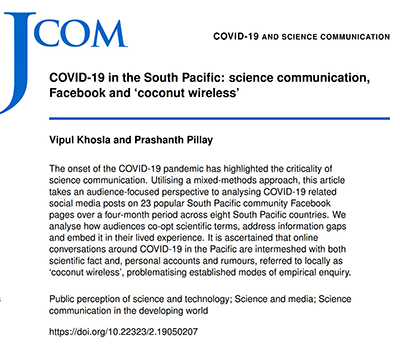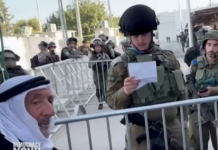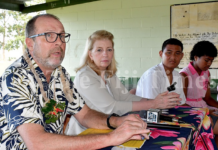
By Laurens Ikinia in Auckland
A new study on the impact of social media in the Pacific during the covid-19 coronavirus pandemic has warned about the potential for misinformation or disinformation to have “dangerous outcomes”.
But the report also acknowledges the importance of the so-called “coconut wireless” in Pacific information sharing and says that an effective communication programme can provide “contextually specific understanding” and allow science practitioners to inform and engage.
The study by Vipul Khosla and Dr Prasanth Pillay, entitled Covid-19 in the South Pacific: Science Communication, Facebook and Coconut Wireless, has been published in JCom-The Journal of Science Communication. It was commissioned by the Pacific Media Assistance Scheme (PACMAS) and both researchers are employees of the ABC division for International Development.
- READ MORE: The Pacific Media Centre’s covid-19 news file
- Tropical Cyclone Harold meets the Novel Coronavirus
“It was clear from our analysis that the planning and implementation of effective science communication around covid-19 requires both an informed sensitivity to cultural contexts (e.g. food security challenges when local markets are inaccessible due to COVID-19 guidelines), and a commitment to using consistent terminology in public health messaging,” the study says.
“The global mainstreaming of terms such as ‘social distancing’ both by the WHO [World Health Organisation]and international and local media as part of common parlance, makes reverting to an alternative term particularly challenging for communication practitioners and one that requires prior consideration at a national level by key stakeholders.”
The researchers repeatedly refer to the role of the “coconut wireless” in communication and the spread of scientific messages in Pacific contexts in their analysis.
“The ‘coconut wireless’ is an informal phrase/slang that has a historical sense of playful notoriety in the Pacific as a way of referring to the centrality of ‘word-of-mouth’ (or interpersonal) accounts in the dissemination and discussion of news and rumours,” say Khosla and Dr Pillay.
“The phrase was used consistently in discussions on COVID-19 (under the sampled analysis period) to flag presumed factual inconsistencies, [or] to clarify the authenticity of a story where news sources are not clearly defined.”

The researchers found a high penetration of technology devices and internet access in the South Pacific, social media – mostly Facebook – was used for disseminating information about covid-19 in the Pacific, and several countries used Facebook as their source of information for alert systems such as with Tropical Cyclone Harold.
“Given Facebook’s high penetration and usage rate in the Pacific, the platform serves as an active space for information exchange and deliberation around COVID-19,” says the report.
The study cites five issues to know about Pacific social media and the “coconut wireless”:
- The “practice of doing science communication” is just as important as the science itself: “The methodological practice of curating and classifying evidence in scientific disciplines is valuable in educating [Pacific] audiences on the need to base their assertions and observations around covid-19 on carefully selected evidence.”
- Audience/user centred approach to science communication: “There is a greater need to understand audiences and users of science information to ensure that science communication practitioners understand the context and landscape in which the information is received, interpreted, and shared.”
- Social media and online discourse as a “rich source’ of understanding audiences/users: “Social media and online platforms offer publicly available information that can provide rich insights into how audiences and users engage with scientific terms.”
- Consistency in the use of scientific terminology: “The use of commonly paired terms such as ‘quarantine, isolation’ and ‘physical distancing, social distancing’ can result in confusion among audiences. Furthermore, these terms become embedded into common parlance once introduced in official channels of communication and are accordingly adapted and appropriated, taking a life of their own.”
- Greater institutional focus on media literacy: “There is value in developing and promoting audience-oriented discussions around media literacy at a regional and national level (if not extensively done already). These could comprise of sessions to members of the public that explain clearly how to critically evaluate media sources and differentiate between trusted avenues for news and science communication and typically problematic sources.”
The study was conducted across 23 Pacific mainstream Facebook pages from 1 February to 31 May 2020, showing that in the South Pacific there were three ways of communication used – including oral communication and rumours, online discussion, and science discussion.
“Communication and information flow in the Pacific tends to first originate from interpersonal forms of conversation outside the online sphere, through word-of-mouth,” says the study.
However, the research finds that there are some limiting challenges that cause users of social media to accept information shared by authority.













































